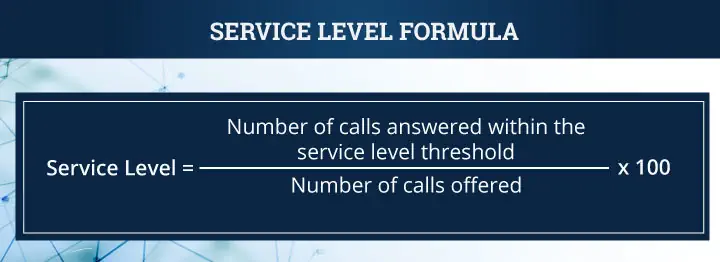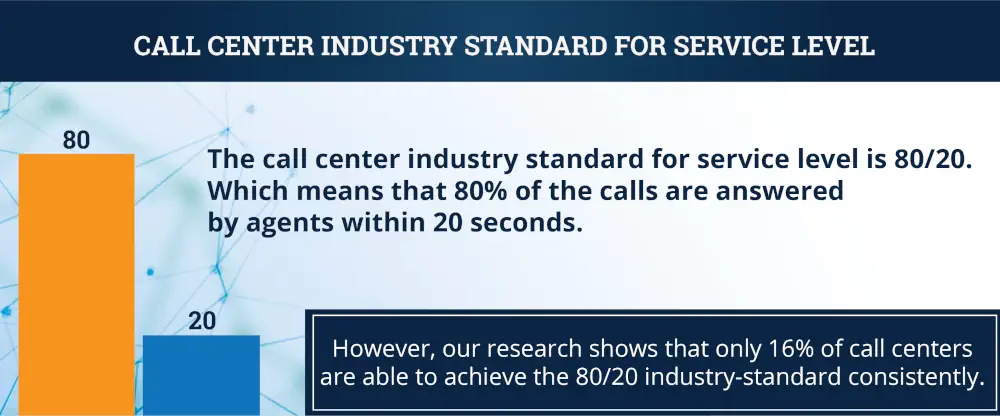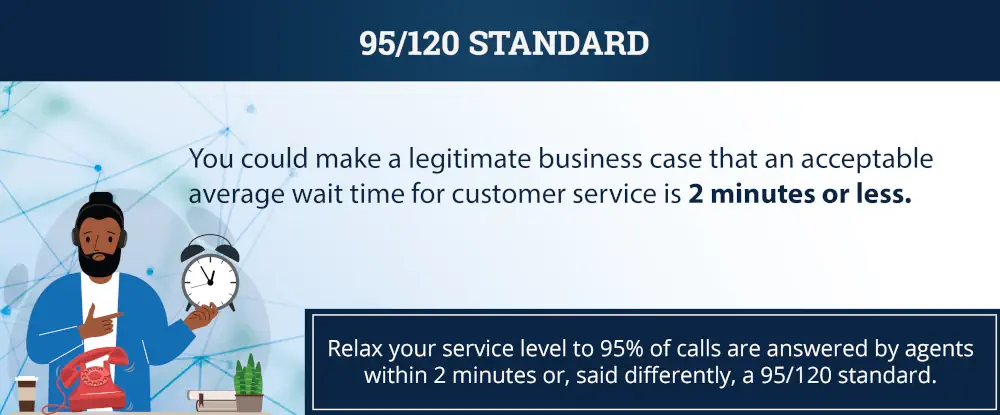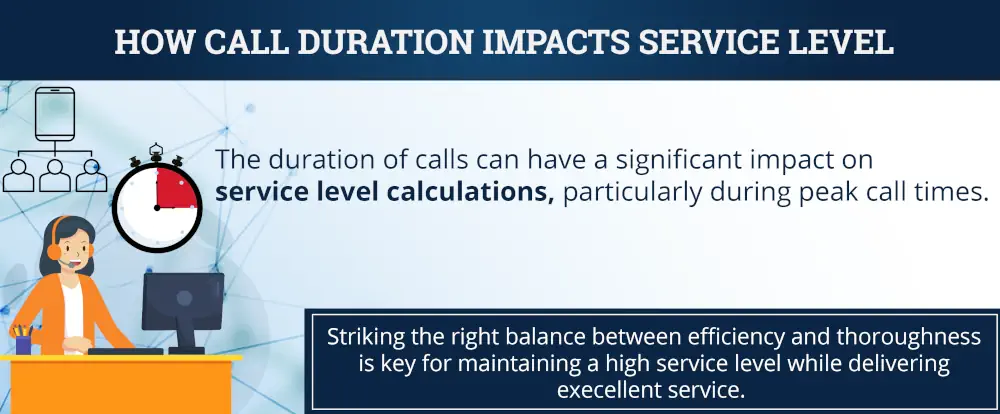Contact centers are the frontline of a company. Whether a customer is calling for support, placing an order, or seeking information, the way they experience a contact center can make or break their perception of a brand. One of the most critical metrics for gauging that experience is the service level (SL).
But what exactly does "service level" mean, and how is it calculated? Is it just about answering calls quickly, or is there more to it? In this blog, we’ll dive into the nitty-gritty of service level calculations, look at industry standards, common pitfalls, and examine how some contact centers might manipulate their numbers to look better than they really are.
What is Service Level?
At its core, service level (SL) is a performance metric used by contact centers to measure how well they are meeting the expectations of their customers in terms of call response time. In other words, it measures the percentage of calls that are answered within a predetermined time frame.
A common service level goal might be answering 80% of calls within 20 seconds, but this can vary depending on the industry, the nature of the contact center, and customer expectations.
In a customer-centric world, the speed with which a contact center responds to an inquiry is often the first impression a customer gets of a brand. A high service level generally means customers get through to an agent quickly, leading to a better overall experience. On the flip side, a low service level could result in frustrated customers who either abandon their call or are left waiting too long to speak with someone.
Why does Service Level Matter?
The service level metric is crucial for several reasons:
- Customer Satisfaction: Faster response times generally correlate with higher customer satisfaction. When customers don’t have to wait long to speak with a representative, they feel valued and heard.
- Operational Efficiency: Service level is an indicator of how effectively a contact center is being run. It shows whether the right number of agents are available at peak times, helping ensure the team is not under- or over-staffed.
- Benchmarking: Service levels help contact centers benchmark their performance against industry standards and their own historical data. This allows for continuous improvement by identifying trends, bottlenecks, or areas where further investment is required.
The Service Level Formula
Calculating service level is relatively straightforward once you understand the formula. Here’s the basic formula for service level:
Service Level = (Number of Calls Answered Within SL Threshold / Total Number of Calls Answered) x 100

For example, if your contact center answered 1,000 calls, and 800 of those calls were answered within the designated SL threshold (e.g., 20 seconds), the calculation would look like this:
Service Level = (800 / 1,000) x 100
Service Level = 80%
This means that 80% of calls were answered within the designated response time, which would typically meet the goal of 80/20.
What Counts in the Service Level Calculation?
It's important to know what is counted—and what is excluded—in the service level calculation. While the basic formula seems simple, there are several nuances.
Answered Calls vs. Total Calls
The calculation only considers calls that are answered. Unanswered calls, such as those that were abandoned before being picked up, do not factor into the service level calculation.
Time-Based Targets
Most contact centers use time-based targets like “80% of calls answered within 20 seconds.” These targets can vary based on industry standards or internal goals. Some centers may even have more aggressive targets, such as answering 90% of calls within 10 seconds.
Call Types
Certain call types might be excluded from the service level calculation. For example, some centers exclude calls that are routed to voicemail or transferred to another department, as these calls do not always reflect the performance of the frontline team.
Abandoned Calls
How abandoned calls are handled is often a point of contention. Should they be excluded from service level calculations? Should all abandoned calls count as missed opportunities? These questions are discussed in detail later in this blog, but generally, abandoned calls are not counted as “answered” calls, though how you handle them may impact overall performance and customer experience.
Industry Standards for Service Levels
- Phone: 80% of calls answered within 20 seconds
- Email: 100% of emails responded to within 24 hours
- Live Chat: 80% of chats answered within 20 seconds
- SMS/Messaging Apps: 80% of messages replied to within 20 seconds
Despite the industry standards, SQM’s research reveals that only 16% of call centers consistently meet the 80/20 industry standard. Analyzing call abandonment and customer satisfaction (Csat) data can provide valuable insights for establishing a realistic acceptable average wait time (AWT) standard for customer service.

SQM Group's research indicates that the average time at which customers abandon their calls is 2 minutes and 36 seconds. Additionally, our findings show that calls answered by an agent within 2 minutes after passing through the IVR menu do not negatively affect overall customer satisfaction with the call center.
Based on this data, a strong business case can be made for setting an acceptable average wait time of 2 minutes or less. In other words, you could adjust your service level to ensure 95% of calls are answered by agents within 2 minutes, which can be referred to as a 95/120 standard.

Factors That Impact Service Level Calculations
Several factors can influence the accuracy and interpretation of your service level results. Let’s take a closer look at some of the most important considerations when calculating and analyzing service levels.
Call Abandonment: Should Calls That Abandon Within Five Seconds Be Excluded?
One of the most debated aspects of service level calculations is how to handle abandoned calls. In particular, should calls that abandon within a few seconds be excluded from the service level calculations?
In many cases, calls abandoned within the first few seconds are considered "non-serious" or calls where the customer didn’t intend to wait for assistance. This can happen when a customer dials in, hears the hold message, and then decides to hang up almost immediately. Since these calls do not reflect the true demand for agent interaction, many contact centers choose not to count these calls in their service level calculations.
Should All Abandoned Calls Be Excluded from the Calculation?
The question of whether all abandoned calls should be excluded from service level calculations is a more complicated one. Abandoned calls are those where customers hang up before an agent answers the call. They can be a sign of customer dissatisfaction or impatience, but not all abandoned calls are equal.
- Early Abandonment: As we discussed, some centers exclude calls abandoned after a short hold time (e.g., within 5-10 seconds). These are generally considered less important for calculating SL, since they may indicate a customer who decided the wait was too long but didn’t actually experience a significant delay.
- Late Abandonment: Calls abandoned after a prolonged wait (e.g., 30 seconds or more) are much more significant. They typically signal a failure in meeting the service level goals and can contribute to a negative customer experience. These calls should definitely be considered in your SL calculations, as they reflect actual customer behavior influenced by long wait times.
Excluding all abandoned calls from service level calculations can make your metrics look better on paper, but this can be misleading. If a customer hangs up due to frustration with long wait times, that may be a sign of systemic issues that need addressing. Failing to include abandoned calls in your SL could result in a false sense of security and mask underlying operational problems.
In some cases, contact centers may also exclude abandoned calls from specific time frames, such as after business hours or during periods of unusually high volume. However, this should be done with caution, as it might obscure the true picture of the customer experience.
The Influence of Call Duration on Service Level
The duration of calls can have a significant impact on service level calculations, particularly during peak call times. Calls that last longer than expected—due to their complexity or the need for a detailed conversation—can create significant delays in answering subsequent calls, lowering the service level score.
Longer calls may cause longer queues, which in turn can lead to increased abandonment rates and missed service level targets. This is particularly problematic in industries where customer interactions are often complex and require more time (e.g., technical support, financial services).
In such cases, managing call duration becomes crucial. While agents should aim to resolve issues efficiently, giving them enough time to handle more complex inquiries without rushing can also improve overall customer satisfaction. Striking the right balance between efficiency and thoroughness is key for maintaining a high service level while delivering excellent service.

